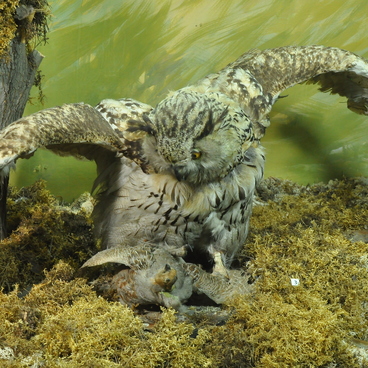Woodcock is classified into Charadriiformes order. Its Latin name is Scolopax rusticola. The Russian name of the bird has the German origin and is similar to Waldschnepfe, literally ‘a forest wader’. The Vladimir Dahl’s Explanatory Dictionary of the Living Great Russian Language contains some other names for that bird: borovoy kulik, sluka, krekhtun, berezovik, borovik and krasny kulik. Very few use them nowadays.
Woodcock is a small bird the size of a pigeon. Its body length is 33-38 centimeters and it weighs 210-460 grams. Woodcock coloration - rusty-brown, with black, gray or red spots on the upper body - blends in with the environment and makes the bird effectively invisible against the backdrop of the last year’s foliage.
Woodcocks, as a rule, live in broadleaved forests, nearby forest swaps, springs and small rivers. Their usual diet includes earthworms and other invertebrates, which they find by probing soft forest soil and underbrush.
Woodcocks perform their mating ritual within the time period between sunset and complete darkness. Each male has its own area, which it patrols regularly using several favorite routes. They make their nests in the remotest part of the forest. A woodcock’s nest is normally a small hole in the ground, usually hidden under a bush or fallen branches. Woodcocks have them padded with last year’s leaves, needles, grass or moss.
Females normally lay four reddish-brown or pale-ocher colored eggs punctuated with brown and grey spots and specks. Female sits very tight on the eggs and does not leave them unless there is a grave danger. If there is a predator approaching, she lures it away by loud cries. Hatchlings are covered with pale yellowish fuzz with large grey and brown spots. Inside 10 days after seeing the light they already have feathers and can flutter, and in three weeks they fly with a natural-born confidence.
People often hunt for woodcocks, especially in springtime. At that time, the birds produce low, rather sweet sounds usually called ‘khorkhanye’ followed by a high-pitch two syllable sound ‘tsi-tsik’ (‘tsikanie’).

